Introduction
Dive into the rich tapestry of educational thought, and two names emerge as beacons of influence: Jean Piaget and Lev Vygotsky. Their pioneering research has laid cornerstones for how we perceive and facilitate learning.
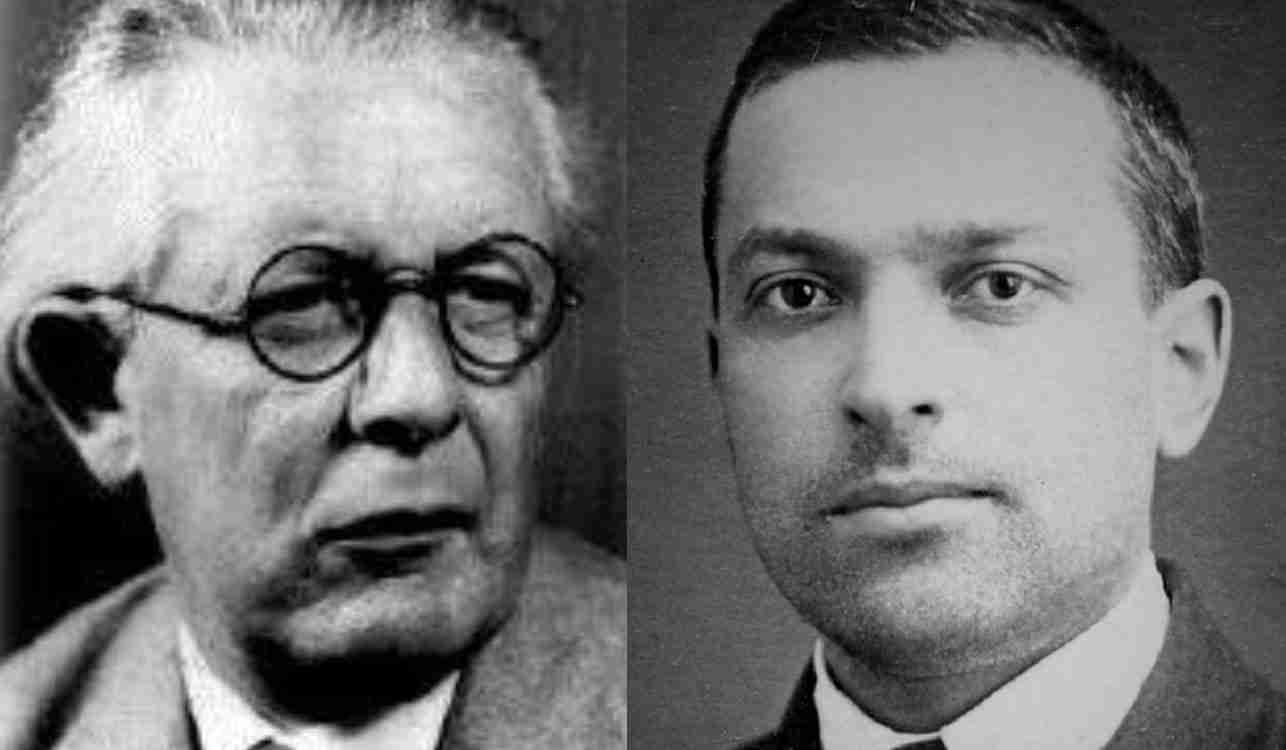
Piaget's meticulous exploration of the cognitive developmental stages paints a picture of how children interact with and construct knowledge. Conversely, Vygotsky introduces us to the transformative power of social interactions and the magic of guided learning in the Zone of Proximal Development. Both theories, although distinct, resonate deeply with the essence of education – understanding the learner. For educators, grasping these theories is more than an academic exercise. It's a pathway to moulding pedagogical strategies that resonate with the evolving minds in our classrooms. For a more comprehensive dive into the roots of educational theories and their profound influence on today's pedagogy, we recommend revisiting Understanding Educational Theorists: The Foundations of Modern Pedagogy.
Piaget's Influence on Classroom Practices
At the heart of Jean Piaget's work lies a profound understanding of how children think and grow. His cognitive development stages— from the sensorimotor to the formal operational stage—provide an invaluable lens through which educators can perceive and foster learning. [Placeholder: Diagram depicting Piaget’s stages of cognitive development.]
Child-Centred Learning
Piaget championed that children are passive receivers of information and active constructors of knowledge. Classrooms inspired by Piaget prioritize child-led activities, allowing students to lead their exploration, ask questions, and cultivate curiosity.
Discovery Learning
Hand-in-hand with child-centredness is the joy of discovery. Rather than spoon-feeding information, Piagetian-inspired educators set up environments ripe for exploration, encouraging students to seek answers, experiment, and reach conclusions on their own.
Readiness to Learn
Recognising that children move through distinct cognitive phases, educators can tailor their teaching techniques. By gauging when a child is developmentally ready, lessons can be optimally timed to when students are most receptive.
In Practice
Mrs Thompson, a Year 2 teacher in a suburban UK school, taps into discovery learning by setting up 'exploration stations' in her classroom. Children engage with materials, form hypotheses, and discover mathematical concepts firsthand. Such strategies, rooted in Piaget's observations, enrich classroom experiences and anchor them in a deeper understanding of child psychology.
Vygotsky’s Impression on Education
Lev Vygotsky's name is synonymous with social learning. The Zone of Proximal Development (ZPD) is at the nucleus of his theory – a conceptual space defining what a learner can do independently and achieve with assistance.
Peer Learning
Vygotsky highlighted the unmatched potential of peer interactions. When students collaborate, they often bridge each other's knowledge gaps, exploring the realm of the ZPD together. Group projects, discussion circles, and peer assessments are common avenues for facilitating such interactions in UK classrooms.
Scaffolding
This involves educators or more knowledgeable peers offering structured support, aiding learners to reach new heights in their understanding. Once the student gains confidence, this support is gradually withdrawn, akin to a scaffold being removed as a building is erected.
Guided Discovery
A merger of Piaget's discovery learning and Vygotsky's scaffolding, this approach leads students toward key discoveries, providing hints or posing strategic questions to nudge their thinking.
In the Classroom
Mr Davis uses guided discovery during history lessons at a primary school. As his Year 5 class explores ancient civilizations, he asks probing questions, letting students connect the dots and uncover historical narratives themselves. By implementing Vygotsky's insights, educators create an environment where students learn from the teacher and each other, nurturing a community of collaborative thinkers.
The Synergy of Piaget and Vygotsky in the Classroom
When you juxtapose Piaget's child-centric vision with Vygotsky’s emphasis on guided instruction, you don't see opposition – you witness synergy. This harmonious blend is where the modern classroom finds its sweet spot. 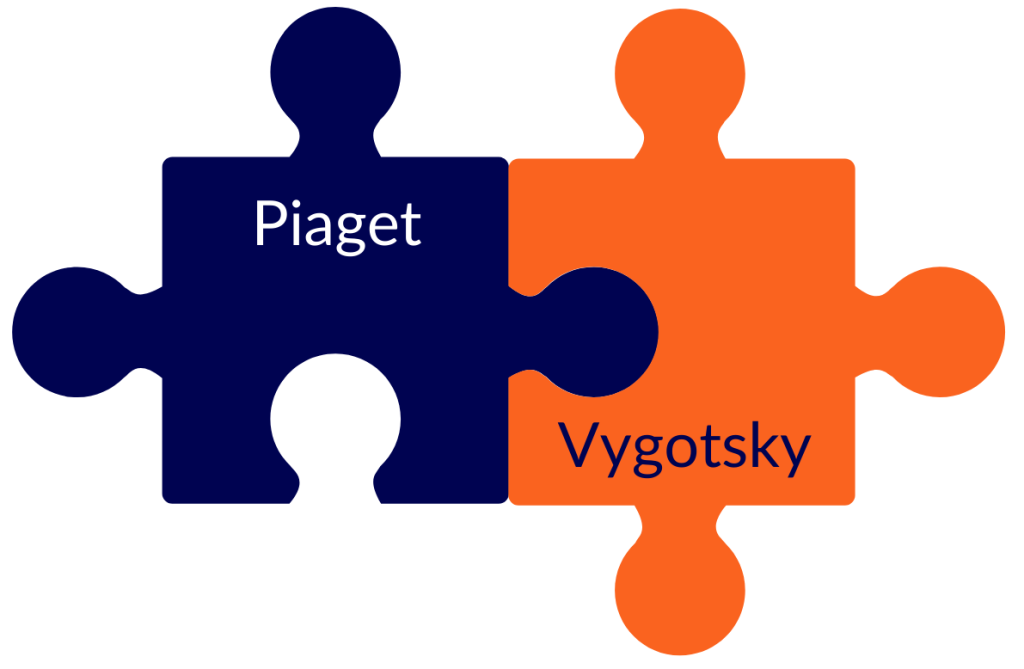
Child-Centred Discovery (Piaget)
The child's active role in knowledge acquisition is at the heart of Piaget's philosophy. He believed in allowing children to explore, ask questions, and make discoveries on their own.
Guided Learning (Vygotsky)
Conversely, Vygotsky emphasized the scaffolding a more knowledgeable other provides – be it a teacher, parent, or peer. This guidance is crucial in helping the child reach beyond their current developmental level.
The Common Ground
Both theorists understood the irreplaceable value of social interaction and active engagement in learning. Piaget highlighted the developmental stages and readiness, while Vygotsky emphasised the environment and guidance.
Blended Teaching Methodologies
Imagine a classroom where students are grouped based on their strengths, with each group tasked with a problem-solving activity. While they engage in peer discussions and discoveries (Piaget), the teacher floats around, offering hints, probing deeper thought, and aiding those who hit a stumbling block (Vygotsky). It's not just about individual exploration or external guidance; it's about harmonizing the two. 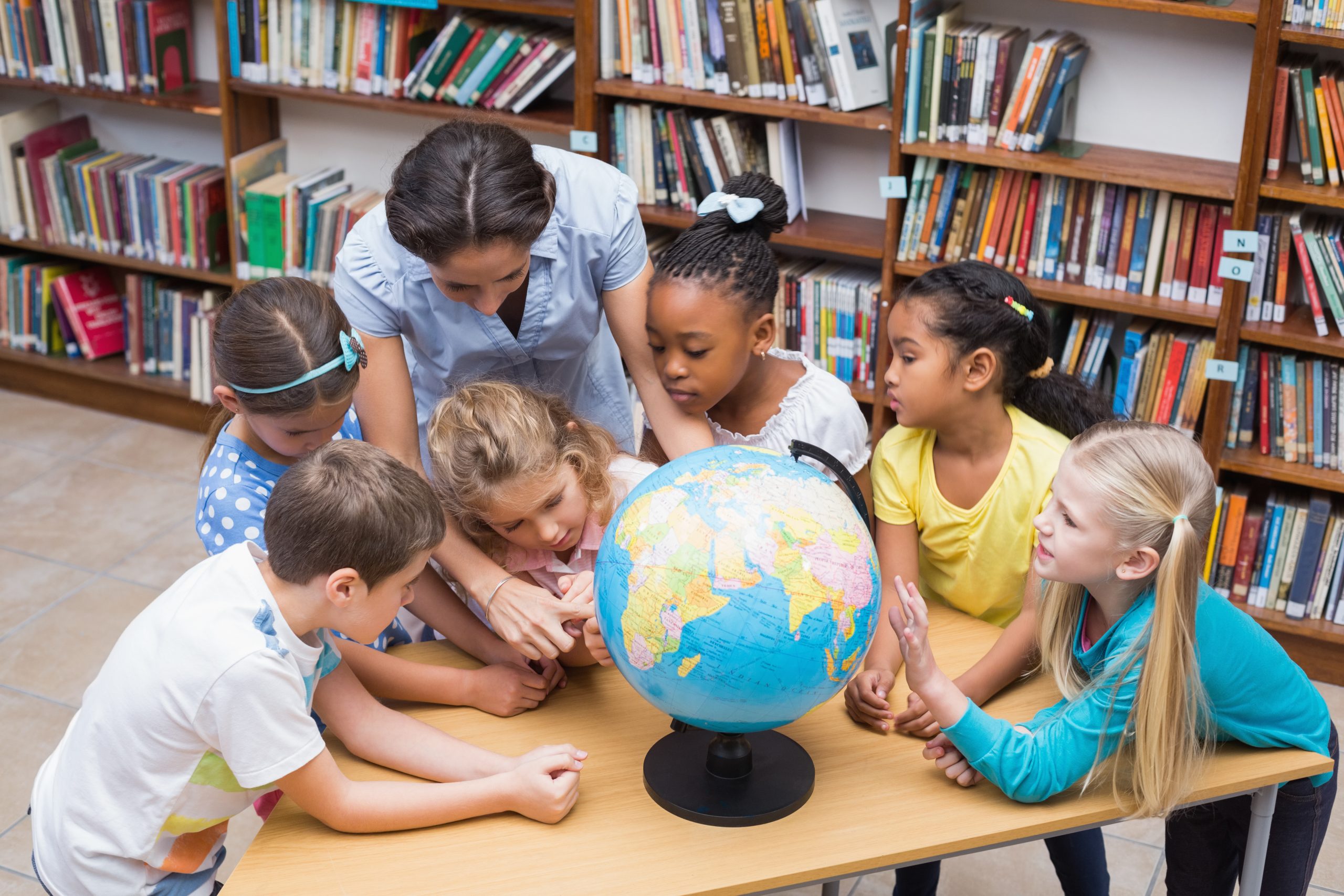 Embracing both perspectives, educators can mould a learning environment that values individual discovery while recognizing the profound influence of guidance and collaboration.
Embracing both perspectives, educators can mould a learning environment that values individual discovery while recognizing the profound influence of guidance and collaboration.
Challenges in Implementing the Theories
As with any theory, bringing Piaget and Vygotsky's insights into the bustling, diverse environment of a classroom is not without its challenges.
Potential Issues in Full Adoption
Piaget’s Stage-locked Learning: Piaget's stage-centric approach, while groundbreaking, has received criticism for being too rigid. Is every child really at the same cognitive stage at the same age? Can a child in the concrete operational stage not sometimes think abstractly? Vygotsky's Emphasis on Social Learning: While Vygotsky stresses social interaction as paramount, not every student thrives in group settings. Some learners may feel overwhelmed or distracted.
Balancing Theory with Individual Needs
Adopting any educational theory should never be at the expense of recognizing the individual student. Classrooms are teeming with personalities, backgrounds, and learning paces. 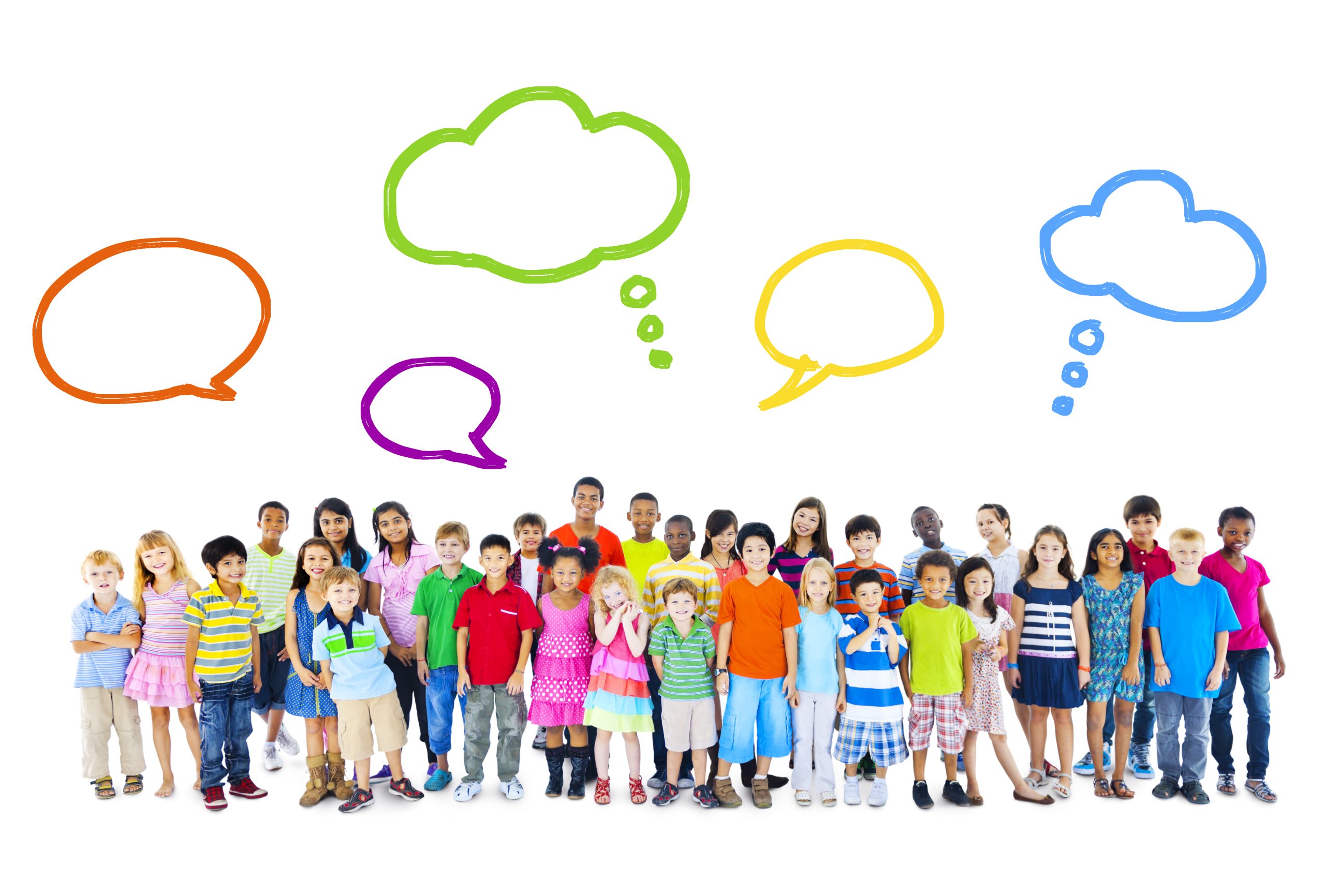 The challenge lies in intertwining the theoretical framework with personal teaching styles, curriculum demands, and the ever-changing needs of students. For instance, while the Zone of Proximal Development provides an excellent guide, it's essential to remember that the 'zone' might differ day-to-day for each student based on numerous factors. In the quest for educational excellence, these theories offer invaluable insights. Yet, their implementation demands sensitivity, flexibility, and a constant pulse-check on the dynamic nature of young learners.
The challenge lies in intertwining the theoretical framework with personal teaching styles, curriculum demands, and the ever-changing needs of students. For instance, while the Zone of Proximal Development provides an excellent guide, it's essential to remember that the 'zone' might differ day-to-day for each student based on numerous factors. In the quest for educational excellence, these theories offer invaluable insights. Yet, their implementation demands sensitivity, flexibility, and a constant pulse-check on the dynamic nature of young learners.
Future of Pedagogy: Evolving with Piaget and Vygotsky
Education constantly evolves, but the foundational theories of legends like Piaget and Vygotsky remain evergreen. In the rapidly shifting landscape of modern classrooms, how can educators continue to uphold these teachings, especially as technology becomes an integral component of learning?
Building Upon Foundation
Active Learning in Digital Spaces: Inspired by Piaget's child-centred discovery, modern ed-tech tools offer interactive simulations, allowing students to explore concepts at their own pace. Think of virtual reality journeys through the human body or historical events – learning by discovery, amplified by technology. 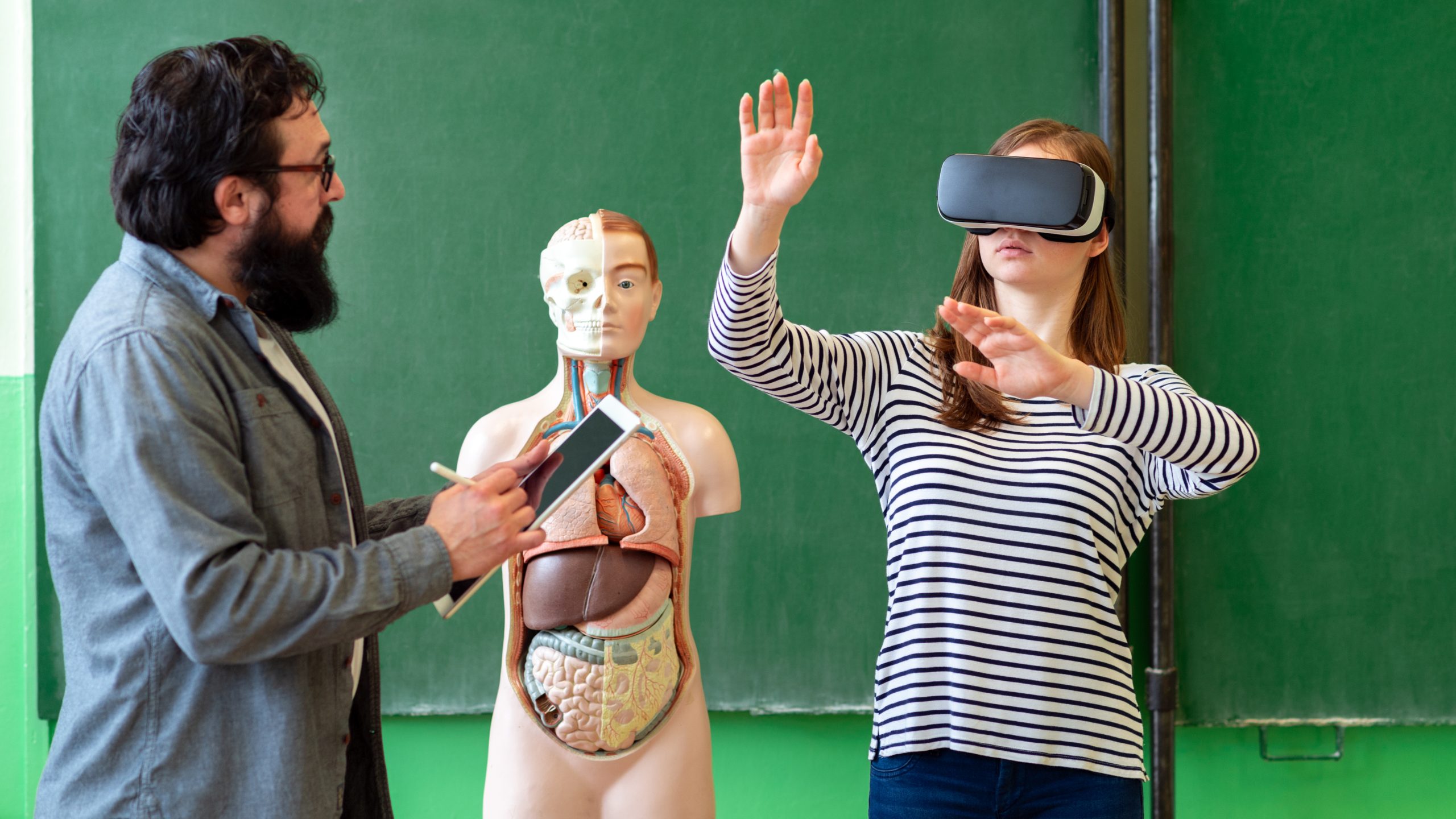 Guided Learning in Online Communities: Vygotsky's social interaction and scaffolding principles find new life in online forums, collaborative projects, and mentor-led e-learning modules. With global classrooms now a reality, the Zone of Proximal Development can encompass peers from around the world.
Guided Learning in Online Communities: Vygotsky's social interaction and scaffolding principles find new life in online forums, collaborative projects, and mentor-led e-learning modules. With global classrooms now a reality, the Zone of Proximal Development can encompass peers from around the world. 
Seamless Integration of Tech & Theory
Adaptive Learning Platforms: Harnessing both Vygotsky's emphasis on guidance and Piaget's stages of development, adaptive learning software can personalise content, ensuring it's challenging enough to spur development without overwhelming the learner. AR and Play: Augmented reality games and apps can merge Vygotsky's social interaction with Piaget's play-based learning. Imagine students collaborating to solve an AR-based puzzle, each contributing based on their cognitive stage and social interactions. The horizon of pedagogy, rich with the potential of technology, still holds the echoes of Piaget and Vygotsky. It's up to forward-thinking educators to blend the old with the new, creating learning environments that are both innovative and rooted in proven theory.
Conclusion
In the whirlwind of evolving educational practices, the grounding philosophies of Piaget and Vygotsky remain cornerstones. Their insights into child cognition and the interplay of guidance and discovery shape classrooms even today. Educators, in their pivotal roles, carry the torch of these legends, always refining and revising. It's not just about adhering to these theories but about moulding them to fit each unique student and classroom setting. A true educator is both an informed scholar of the past and an adaptive architect of the future. For those eager to delve deeper into the labyrinth of educational theory and see how other thinkers intersect and diverge from Piaget and Vygotsky, our article, Understanding Educational Theorists: The Foundations of Modern Pedagogy, awaits your exploration. Remember, every teaching strategy, no matter how contemporary, has roots. And understanding those roots can only make us better educators for the learners of tomorrow.
Further Reading & Resources
For those with an insatiable thirst for knowledge, and a keen desire to journey further into the minds of Piaget and Vygotsky, we've handpicked a selection of must-reads. These books unravel the intricacies of their theories, offering an enriched perspective for educators keen to bridge theory with practice. Piaget's Theory of Cognitive and Affective Development by Barry J. Wadsworth: Dive into this accessible introduction to Piaget's revolutionary ideas, offering educators a foundational understanding of cognitive development. Mind in Society: The Development of Higher Psychological Processes by L.S. Vygotsky: A seminal work, this book is Vygotsky's exploration of the roles of social interaction and cultural tools in cognitive development. Vygotsky and Education: Instructional Implications and Applications of Sociohistorical Psychology by Luis C. Moll: Delve into Vygotsky's core educational ideas and their transformation into contemporary instructional practices. This is the tip of the iceberg; the world of educational theory is vast. To navigate it with a steady compass, keep our guide, Understanding Educational Theorists: The Foundations of Modern Pedagogy, close at hand. Happy reading!


